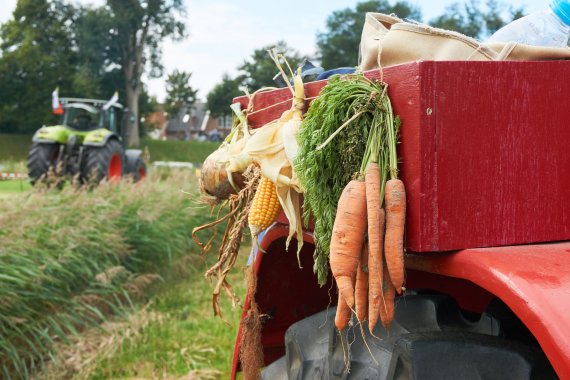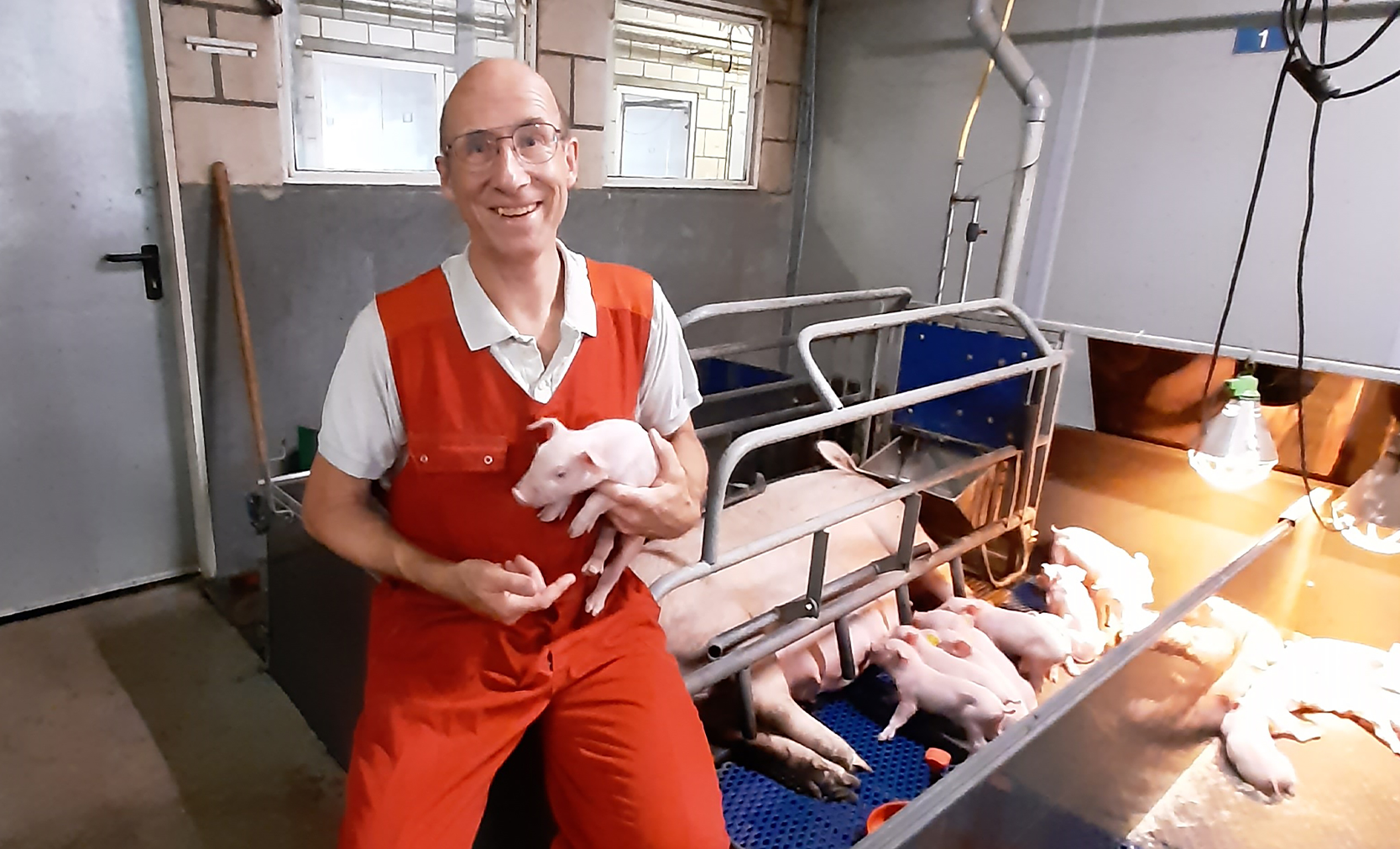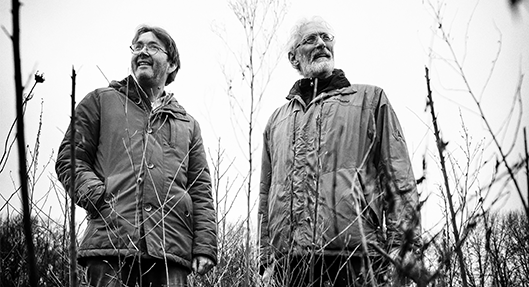Organic will become mainstream,’ announced the Rabobank during market research at the beginning of this year. ‘The organic sector has grown in recent years from a niche to a mature market in which the big food companies operate too. The discount supermarket Lidl, for example, has doubled the number of organic products on its shelves in two years, and Albert Heijn now offers more than 1000 organic options.’ The turnover in organic food products is growing by 10 per cent per year, as opposed to one per cent for the rest of the food market, claimed the Rabobank.
Last year, there were 1952 organic farms, which between them supplied less than five per cent of the food consumed in the Netherlands. They farmed not more than 70,000 hectares (about four per cent of the country’s farmland), showed figures from the branch organization Bionext. By way of comparison: Spanish organic farmers manage 2.2 million hectares of land.
In terms of market share, the Netherlands is below the European average. Neighbouring countries such as Germany (6.8 per cent), France (6 per cent) and Belgium (6.2 per cent) have proportionally more organic farmers, and countries such as Austria and Sweden far more (23.4 and 19.2 per cent respectively). So why is organic agriculture stagnating in the Netherlands?
Subsidies
‘Firstly: these figures distort the situation,’ says Wijnand Sukkel, an Agro-ecology researcher at Wageningen Plant Research. ‘In Southern European countries and mountainous areas, a lot of marginal and extensively farmed land has been turned over to organic farming with the help of subsidies.’ In countries such as Italy and France, where land prices are low, that kind of subsidy is of interest. ‘In the Netherlands, on the other hand, there are no subsidies for organic production and land prices are high. So Dutch organic farmers have to farm relatively intensively and preferably produce goods with a big profit margin,’ says Sukkel. Which is why Dutch organic farmers mainly produce (and export) dairy produce and vegetables such as onions and carrots. In short: high land prices in the Netherlands stand in the way of extensive organic farming.
The policy of stimulation caused the supply of organic products to outstrip demand
‘A second reason for the slow growth is that the organic sector doesn’t want to grow quickly,’ says Sukkel. Twenty years ago, the Dutch government still provided transition subsidies for regular farmers who wanted to switch to organic farming. The effect of that policy of stimulation was that the supply of organic products increased faster than the demand. As a result, prices fell so much that the organic farmers got into trouble and some of them switched back to regular production methods.’ For that reason, the Dutch government decided in 2004 to stop subsidizing the sector and instead to stimulate the purchasing of organic products through information and publicity campaigns. ‘So gradual growth is better for the farmers’ incomes.’
Gradual growth is better for farmers’ incomes
Ready meals
A third reason for the slow growth has to do with Dutch consumers. ‘The Netherlands has a culture of cheap food,’ says Sukkel. ‘We spend only 11 per cent of our income on food, whereas in other European countries people can spend twice that. And on top of that: in spite of all the food scandals, the Dutch consumer has a lot of faith in the health and safety of conventionally farmed food.’ As a result, switching to organic food, which is often twice the price, is a big step.
‘Compare the Dutch situation with that in the south and east of France,’ says Katja Logatcheva, a market researcher at Wageningen Economic Research. ‘In those regions, small-scale farmers produce food for regional labels. This creates more product differentiation and the consumers are more used to pricier regional food. In that kind of food culture, the step from conventional to organic food is not as big.’
Logatcheva sees two further reasons why the market share of organic food is low in the Netherlands. ‘Dutch consumers are fond of convenience foods such as prepared products and ready meals. It is difficult to make these products with purely organic ingredients, and that would also push the price a lot higher than that of conventional convenience foods. We also eat a lot of greenhouse vegetables. Even though greenhouse vegetables are not grown using pesticides, they do not count as organic because they are grown on rockwool and not in natural soil – which is a requirement in the organic sector.’
We are fond of ready meals and they are hard to make with purely organic products
Better life
Lastly, there are also market developments that hold back the growth of production of organic meat and other products. For about 10 years, the Better Life label launched by the Dutch Society for the Protection of Animals has dominated the market. The better the animal welfare is on a farm, the more stars its meat gets. Meat from this ‘in-between segment’, bridging conventional and organic production, is cheaper than organic meat. The sustainability labels ‘are putting pressure on the price of organic food,’ writes the Rabobank.
Another development is that the growth of organic farming is not exclusively through sales in specialist health food stores such as Ekoplaza and Odin, as sales through ‘ordinary’ supermarkets are gaining traction. Most of the supermarkets have gone for a wide range of organic products and have their own brands alongside named brands. So the supermarkets are pushing down the prices of organic products.
The consequences of this are already visible. The price difference between organic and conventional products is going down, concluded the Consumer Association last year. Five years ago you paid twice as much, on average, for an organic product than for the regular equivalent: now the difference is 1.75 times as much. Price variation has increased too, the Consumer Association notes. Supermarkets such as Dirk and Vomar offer the cheapest organic food, while the health food stores are by far the most expensive.
The falling prices of organic food are good news for consumers, and could lead to organic farming growing to about 10 per cent of the market. The more demand for organic products grows in the supermarkets, the more the market will rule. Significantly, the growth in organic farm production last year came largely from upscaling of existing organic farms. Organic farmers will have to produce more efficiently or be satisfied with smaller margins. In that sense, too, organic is set to become mainstream.

 Photo: Shutterstock
Photo: Shutterstock 

